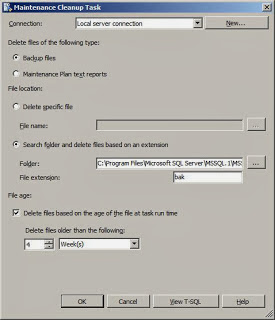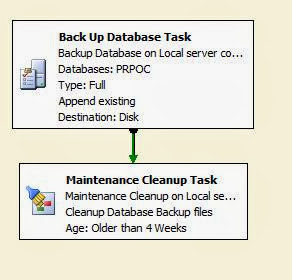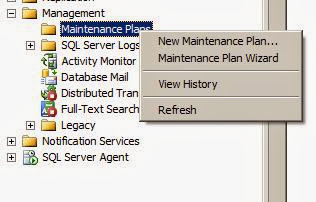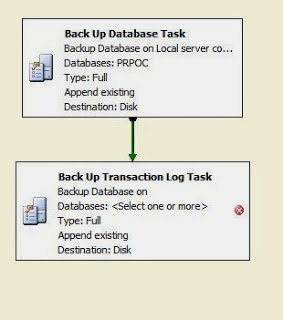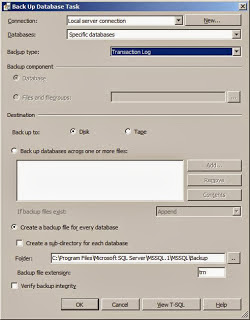Attaching an
event handler / event receiver to a custom list in SharePoint can be done programmatically. You can create a console application so that every time you require to attach an event handler to a list, you just need to run that console application.
Below is the full code of the sample console application that will attach an event handler to a SharePoint list via code. Basically, the console application only supports the following type of event:
- ItemAdding - An event that occurs before an item has been added.
- ItemAdded - An event that occurs after an item has been added.
- ItemUpdating - An event that occurs before an item is updated.
- ItemUpdated- An event that occurs after an item has been updated.
- ItemDeleting - An event that fires before an item is deleted.
- ItemDeleted - An event that occurs after an item has been deleted.
Also, the console application requires four input parameters as listed below:
- Site URL (the full URL of the SharePoint site)
e.g. http://www.abc.com/log
- List Name (the display name of the list)
e.g. ListName
- Event Receivers (The type of event receivers separated by ';')
e.g. itemadded;itemupdated
- Assembly Path (the location path of the assembly)
e.g. C:\\Sample.dll
When you run the console application, the format should be:
AttachEventHandlerToSPList <site url> <List Name> <Event Receivers> <Assembly Path>
Example:
AttachEventHandlerToSPList http://www.abc.com/log ListName itemadded;itemupdated C:\\Sample.dll
Code
using System;
using
System.Collections.Generic;
using
System.Linq;
using
System.Text;
using
Microsoft.SharePoint;
using
System.Reflection;
namespace
AttachEventHandlerToSPList
{
class Program
{
static void Main(string[]
args)
{
string
strClassName = string.Empty;
string
strAssembly = string.Empty;
try
{
if
(args.Length != 4)
{
Console.WriteLine("ERROR: Invalid no. of parameters. \n");
usage();
Environment.Exit(1);
}
string
siteURL = args[0]; //
"http://www.abc.com/sites/DomainRequest"; //
string
listName = args[1]; // "Branch"; //
"Domain Account Request Application";
string
eventReceivers = args[2]; //
"itemadded;itemupdated"; //
"itemadding";
string
path = args[3]; // "C:\Documents and
Settings\Administrator\Desktop\.net workflow\DomainRequest\DomainRequestEventHandler\bin\Release\DomainRequestEventHandler.dll"
//AssemblyName
assemblyName = AssemblyName.GetAssemblyName(@"C:\Documents and
Settings\Administrator\Desktop\.net
workflow\DomainRequest\DomainRequestEventHandler\bin\Release\DomainRequestEventHandler.dll");
Assembly
assembly = Assembly.LoadFrom(@path);
strAssembly =
assembly.FullName;
Type[]
types = assembly.GetTypes();
foreach
(Type type in
types)
{
if
(type.BaseType.Name == "SPItemEventReceiver")
strClassName =
type.FullName;
}
if
(!string.IsNullOrEmpty(eventReceivers))
{
string[]
events = eventReceivers.ToLower().Split(';');
int
nCnt = events.Count();
if
(nCnt > 0)
{
using (SPSite site = new
SPSite(siteURL))
{
using (SPWeb web = site.OpenWeb())
{
SPList list =
web.Lists[listName];
foreach (string
eventType in events)
{
DeleteEventHandler(list, eventType, strClassName);
switch (eventType)
{
case "itemadding":
{
list.EventReceivers.Add(SPEventReceiverType.ItemAdding,
strAssembly,
strClassName);
list.Update();
Console.WriteLine(string.Format("EventHandler
(ItemAdding) has been added correctly in {0}!", listName));
break;
}
case "itemadded":
{
list.EventReceivers.Add(SPEventReceiverType.ItemAdded,
strAssembly,
strClassName);
list.Update();
Console.WriteLine(string.Format("EventHandler
(ItemAdded) has been added correctly in {0}!", listName));
break;
}
case "itemupdating":
{
list.EventReceivers.Add(SPEventReceiverType.ItemUpdating,
strAssembly,
strClassName);
list.Update();
Console.WriteLine(string.Format("EventHandler
(ItemUpdating) has been added correctly in {0}!", listName));
break;
}
case "itemupdated":
{
list.EventReceivers.Add(SPEventReceiverType.ItemUpdated,
strAssembly,
strClassName);
list.Update();
Console.WriteLine(string.Format("EventHandler
(ItemUpdated) has been added correctly in {0}!", listName));
break;
}
case "itemdeleting":
{
list.EventReceivers.Add(SPEventReceiverType.ItemDeleting,
strAssembly,
strClassName);
list.Update();
Console.WriteLine(string.Format("EventHandler (ItemDeleting) has been added
correctly in {0}!", listName));
break;
}
case "itemdeleted":
{
list.EventReceivers.Add(SPEventReceiverType.ItemDeleted,
strAssembly,
strClassName);
list.Update();
Console.WriteLine(string.Format("EventHandler
(ItemDeleted) has been added correctly in {0}!", listName));
break;
}
}
}
}
}
}
else
{
Console.WriteLine("Please
input EventReceivers Type (separated by ';' if multiple)");
}
}
}
catch
(Exception ex)
{
Console.WriteLine("Error! stack:" + ex.StackTrace);
Console.WriteLine("Error! message:" + ex.StackTrace);
Console.WriteLine("press any key to exit ...");
Console.Read();
}
}
static void DeleteEventHandler(SPList splist, string eventtype, string
strClassNme)
{
SPEventReceiverType type =
(SPEventReceiverType)Enum.Parse(typeof(SPEventReceiverType), eventtype, true);
for
(int i = 0; i < splist.EventReceivers.Count;
i++)
{
if
(splist.EventReceivers[i].Class == strClassNme)
{
if
(splist.EventReceivers[i].Type == type)
{
splist.EventReceivers[i].Delete();
splist.Update();
Console.WriteLine(eventtype + "
Event deleted to " + splist.Title + "
list.");
}
}
}
}
public static void usage()
{
Console.WriteLine("Format: AttachEventHandlerToSPList <site url>
<List Name> <Event Receivers> <Assembly Path> \n"
+
"<site url> -
The sharepoint site url \n" +
"<List Name> -
The display name of the list \n" +
"<Event Receivers> -
The type of event receivers \n" +
" separated by ';'.
(e.g. itemadded;itemupdated) \n" +
"<Assembly Path> -
The location path of the assembly.");
Console.WriteLine("e.g. Attach the eventhandler in the List: \n"
+
"AttachEventHandlerToSPList http://www.abc.com/log
ListName itemadded;itemupdated C:\\Sample.dll ");
}
}
}
